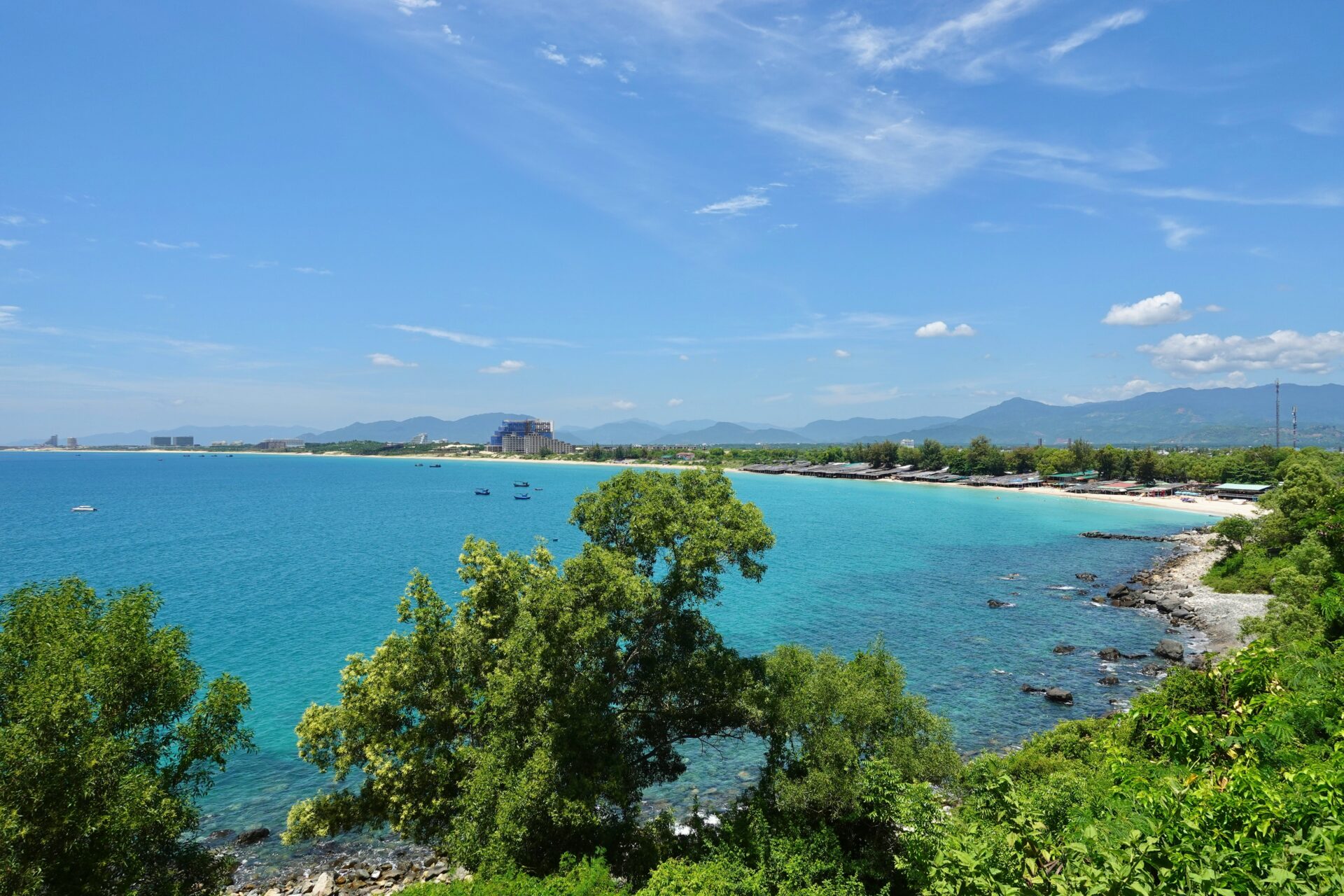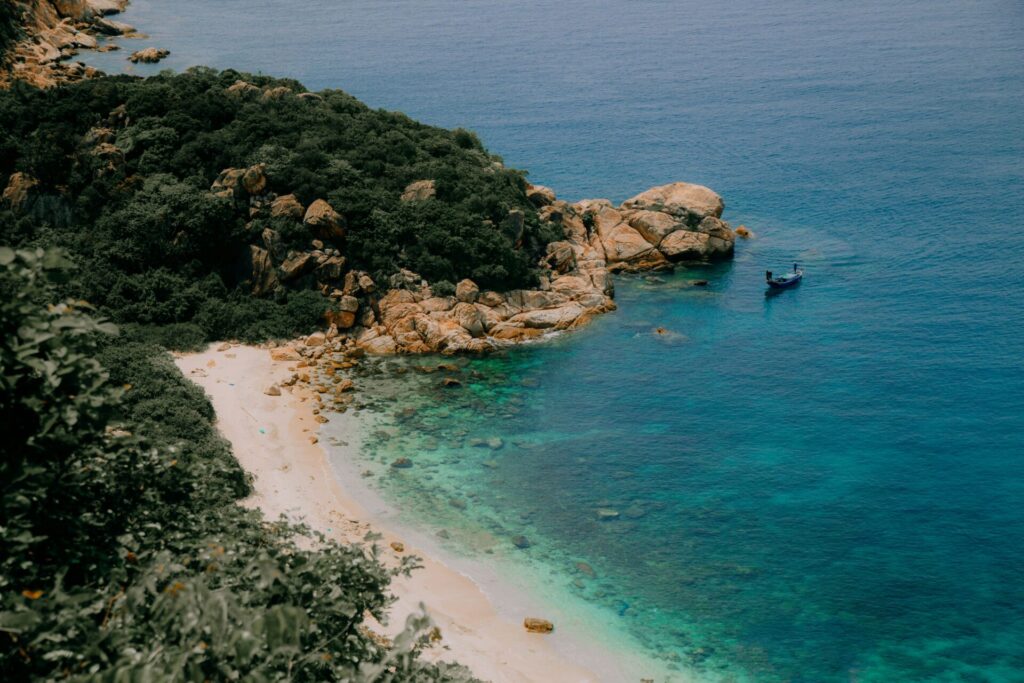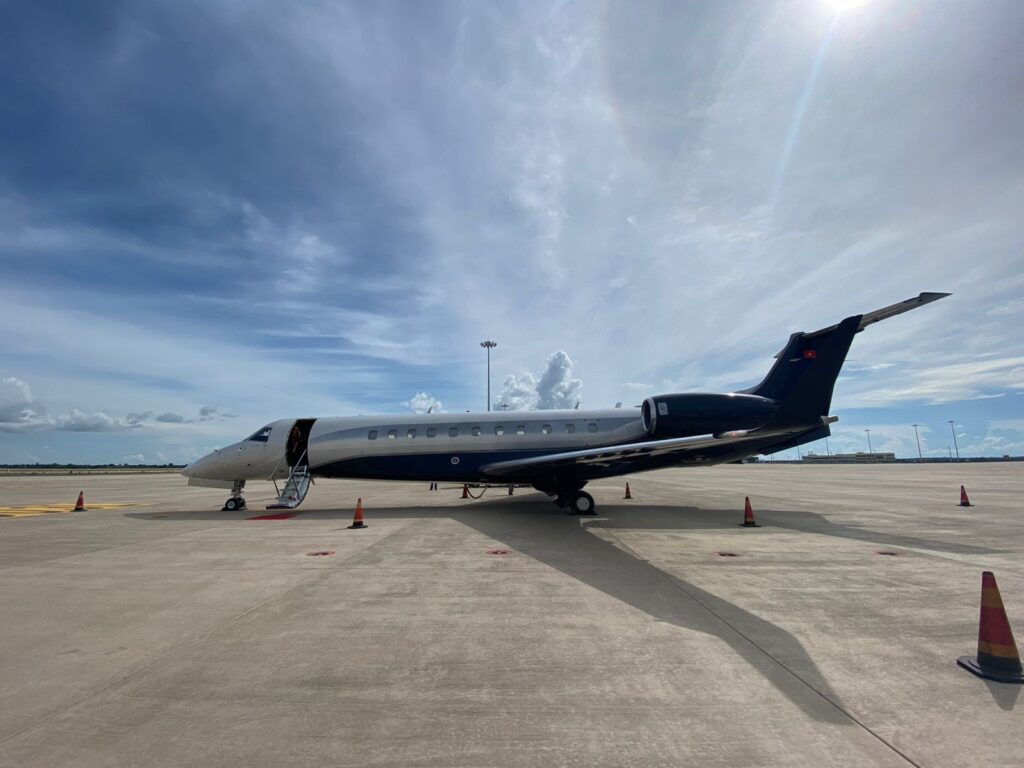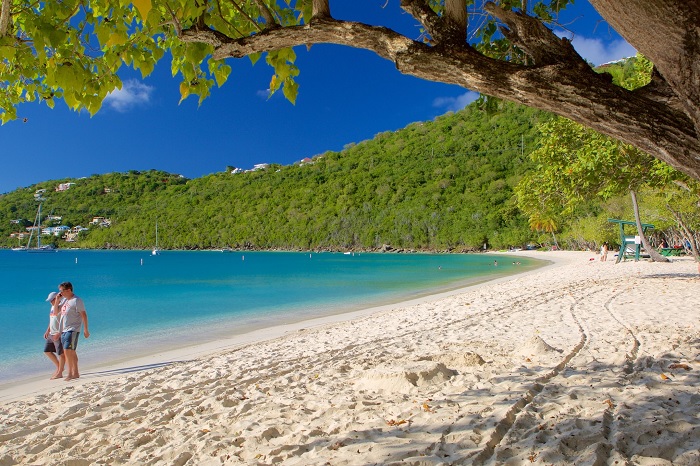Call us +84 396 919 611

Situated on the south-central coast of Vietnam, Cam Ranh Bay is regarded as one of the premier deep-water harbors globally. For years, it has been heralded as the next significant tourist destination, and the reasons are evident: the bay boasts miles of breathtaking and largely unspoiled coastline. However, despite its natural allure and proximity to Nha Trang, many travelers overlook Cam Ranh, often merely passing through Cam Ranh International Airport (CXR) en route to the bustling cities further north.
Cam Ranh Bay used to be very noisy and bustling in the past, but now it is quiet and calm. Mountains and sea are combined to form a masterpiece of the natural marvels throughout Cam Ranh. Coming to Cam Ranh, tourists can enjoy the unique scenery of mountains, sea and landscape.
From Nha Trang city , take the National Highway number 1 for about 40km to the south, then turn to the east, go over the Long Ho bridge; you’ve arrived in Cam Ranh Bay. Cam Ranh Bay is about 100 km2 with five to six km width, nearly 15 km length and a depth of 15-20m.
With the advantages of being a close, wide and deep bay (because it is surrounded by mountains from three sides, and the water is calm throughout the year), Cam Ranh Bay is able to harbor large-tonnage ships of about 10 thousand tons right to the port and 20 thousand tons to the bay door. Cam Ranh Bay’s beauty has been well known for a long time. Mountains and sea are combined to form a masterpiece of the natural marvels throughout Cam Ranh. The bay maintains major contrasting colors: the white color of sand, the blue color of the sea and sky, and the green from mountains and trees all year long.

Cam Ranh used to be very noisy and bustling in the past, but now it is quiet and calm. The streets are crowded in the daytime but then become incredibly quiet at night. Fishing villages are located along the coast, nestling themselves in dense coconut or evergreen forests. Coming to Cam Ranh, tourists can enjoy the unique scenery of mountains, sea and landscape. Along the coastal line is a lovely series of residential areas: Ba Ngoi, Da Bac, Bao Gieng and the peninsula across the bay, including the communes of Mi Ca, Binh Ba, Vung Nom and especially the Thuy Trieu lagoon that has a shallow water tide, and is a breeding ground for blood cockle. The blood cockle’s wonderful taste can be compared to the legendary taste of lobster from O Loan lagoon in Phu Yen province, as a poem from long time ago says:
If you have a chance to visit Cam Ranh Bay, you can take a 40-minute boat ride from the port of Da Bac (Ba Ngoi) to Binh Ba, the place of sea breezes all year long and beautiful scenery. You can also visit Vung Nom – a bustling fishing village – located on the bank of a peaceful and calm river and surrounded by big gardens of coconut and longan trees. It’s also rich with different types of food, most notably lobsters in Binh Ba, which can reach enormous sizes with almost 1-metre antenes. Some can weigh up to seven or eight kilos. In addition, Cam Ranh also has different kinds of seafood, such as snail, crab, seaweed, squid, fish, etc, which are very delicious and reasonably priced. Coming to Cam Ranh in summer, visitors will have the opportunity to enjoy an original variety of mango fruit, small but extremely sweet.
Cam Ranh Bay has great economic and touristic potential. All of the beautiful landscapes around the bay, such as the sand, fishing villages, the hills of the peninsula in the extreme southern region, and yellow apricot blossoming all year round always warmly welcome visitors. Cam Ranh Bay is also considered one of the national major gateways to export products from the central Highlands, such as forestry products, rubber, tea, coffee, tobacco, sugar and fruit. Sand from Ba Ngoi is white and contains sillic, the material for chemical industry and producing glass and crystal. Cam Ranh Bay can also be an ideal place to establish shipping industries, fishing and seafood processing to supply hotels and export. Therefore, Cam Ranh Bay will become one of the largest industrial centers in a near future.
Private Jet Flight to Cam Ranh (CXR)

It takes around 50 minutes to 1 hour to fly from Tan Son Nhat International Airport, Ho Chi Minh (SGN) to Cam Ranh International Airport (CXR) or 1 hour and 50 minutes to 2 hours from Noi Bai International Airport, Ha Noi (HAN) to Cam Ranh. Or 1 hour from Siem Reap to Cam Ranh.

JetVina has been offering private jet flight from and to Cam Ranh International Airport (CXR), please make reference to our operating private jet routes:
- Ha Noi – Cam Ranh
- Ho Chi Minh – Cam Ranh
- Hue – Cam Ranh
- Cam Ranh – Phu Quoc
- Da Nang – Cam Ranh
- Cam Ranh – Can Tho
- Cam Ranh – Siem Reap
- Cam Ranh – Bangkok
- Cam Ranh – Hong Kong
- Cam Ranh – South Korea
- Cam Ranh – Singapore
- Cam Ranh – Australia
- Cam Ranh – Timor-Leste
Guests within Vietnam or abroad can book the Private Jet Flight and use our Fast Track Services and VIP Lounge at Cam Ranh International Airport (CXR) as well as luxury ground transfer by contacting JetVina via Whatsapp or Telephone +84 396.919.611 or E reservations flights@jetvina.com 24-hour notice is required within Vietnam, while regional travelers are required to provide 72-hour notice.
Memberships
Experience
- Hotel & Villa
- Yacht
- Fast Track
- Flight Permits
Legal
Contact Us
- Request a quote
- +84 396 919 611
- flights@jetvina.com
- ------------------------------------------
- Office 1: Phu Quoc: Group 3, Cua Lap, Duong To
- Office 2: 1st Floor Terminal 03 - Tan Son Nhat International Airport, Bay Hien Ward
- ------------------------------------------
- Careers

Membership
Experience
- Hotel & Villa
- Yacht
Legal
Contact Us
- Request a quote
- +84 396 919 611
- flights@jetvina.com
- ---------------------------------------
- Office 1: Phu Quoc: Group 3, Cua Lap, Duong To
- ---------------------------------------
- Office 2: Ho Chi Minh: 1st Floor Terminal 03 - Tan Son Nhat International Airport, Bay Hien Ward
- ----------------------------------------
- Careers




